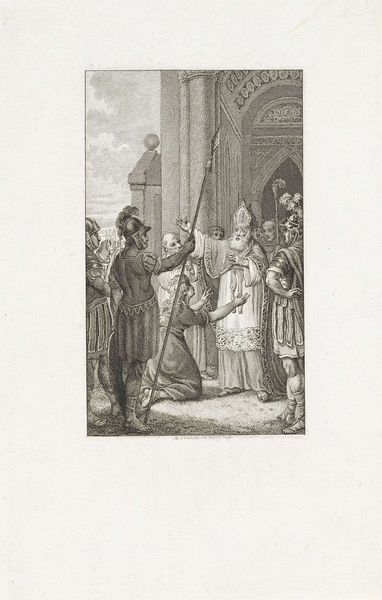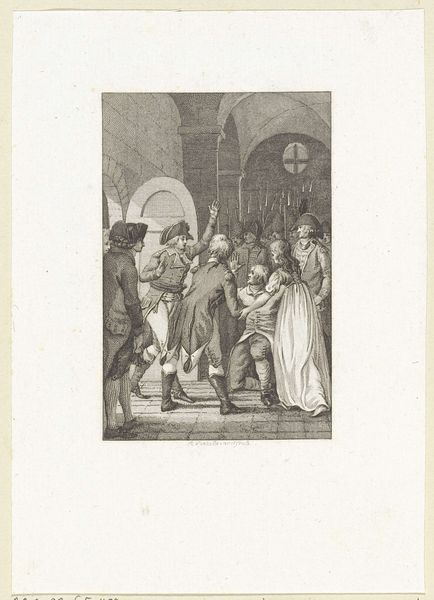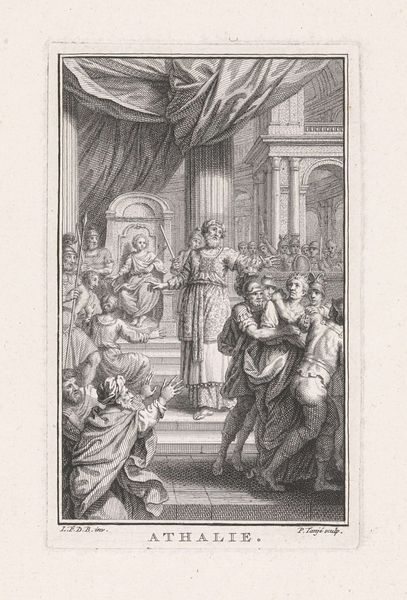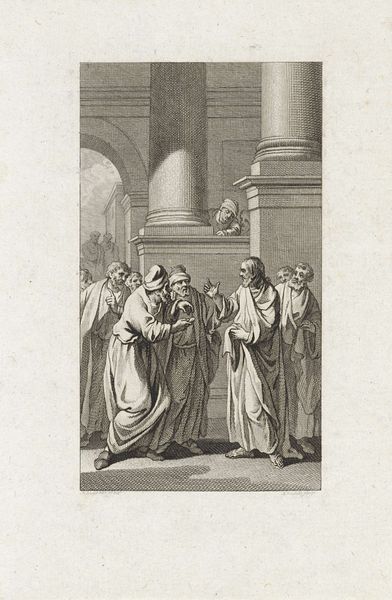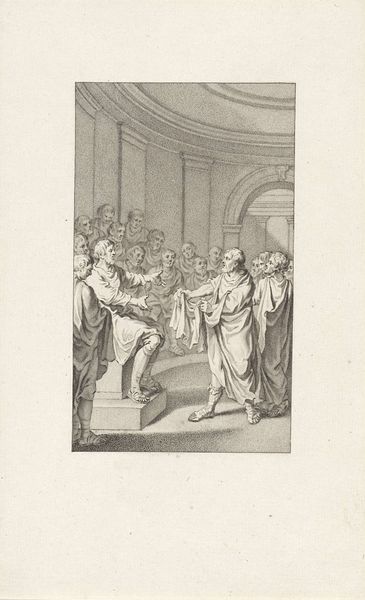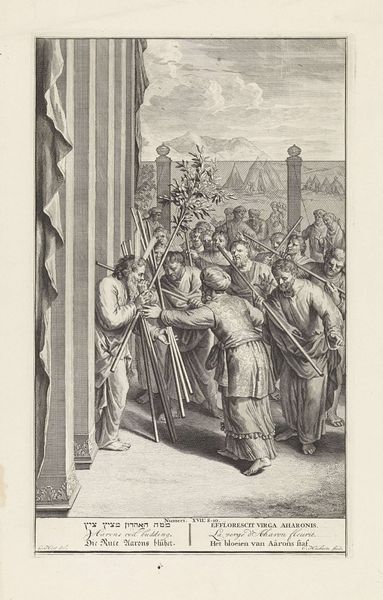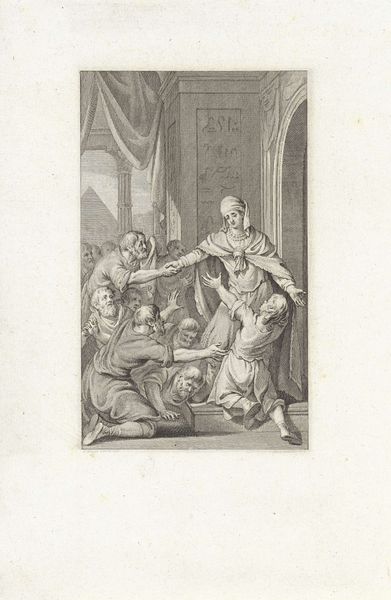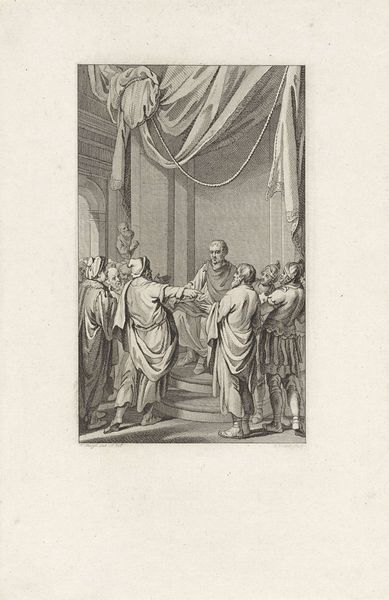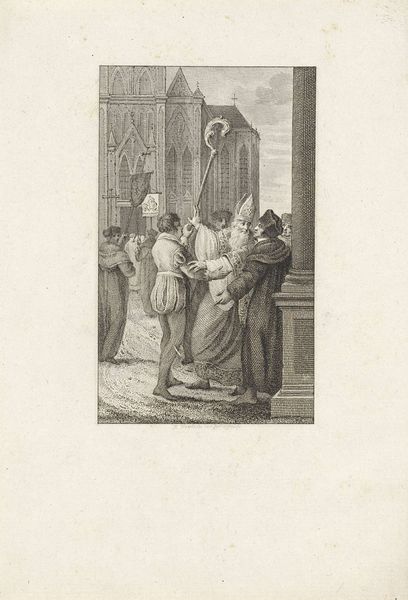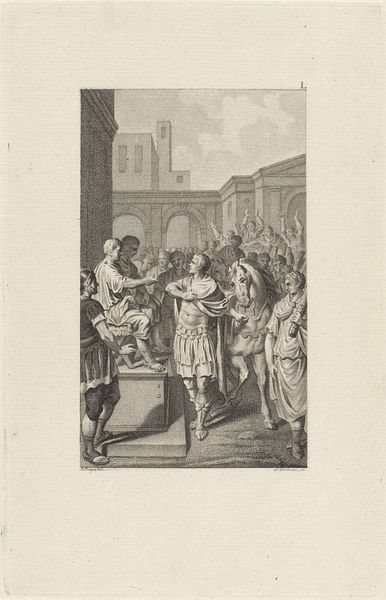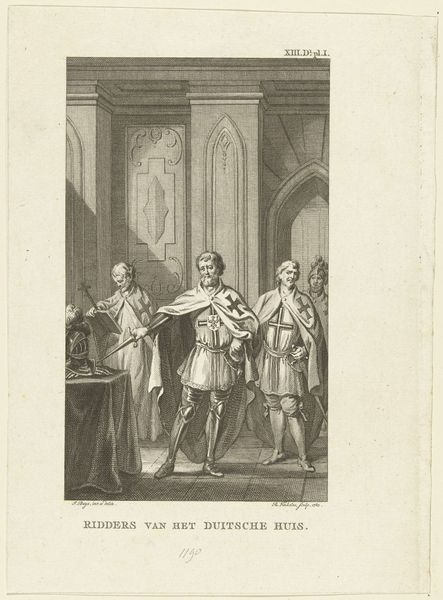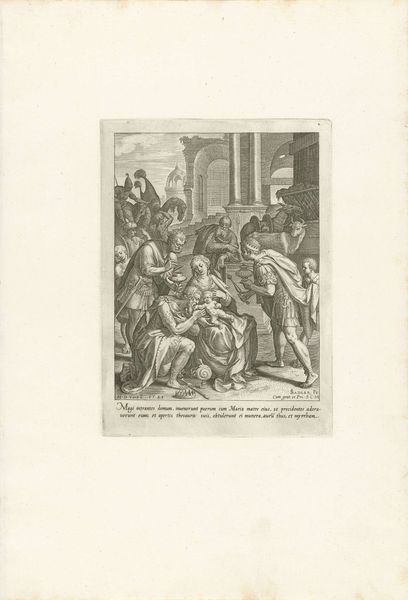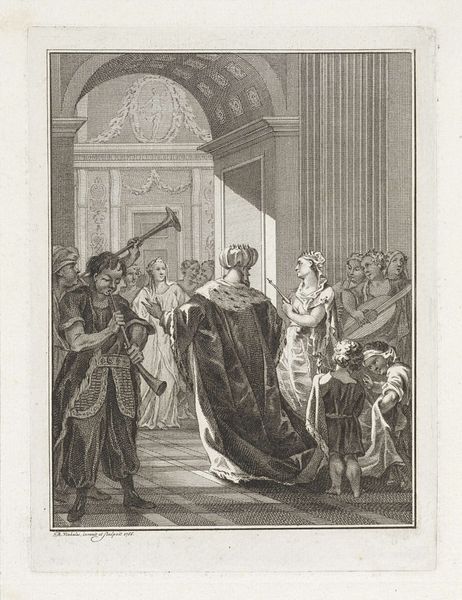
print, etching, engraving
#
pencil drawn
#
neoclacissism
#
narrative-art
# print
#
etching
#
pencil sketch
#
figuration
#
line
#
pencil work
#
genre-painting
#
history-painting
#
academic-art
#
engraving
Dimensions: height 247 mm, width 163 mm
Copyright: Rijks Museum: Open Domain
Curator: Here we have Reinier Vinkeles’ “Karel deelt zijn leerlingen in,” created in 1808. It's an engraving, currently held here at the Rijksmuseum. My first impression is how controlled and almost severe the line work is. Editor: Controlled indeed! The etching and engraving processes really lend themselves to that aesthetic. And look at the material support: paper. So ubiquitous, so often overlooked. But think of the history embedded there, the paper mills, the labour involved... Curator: Absolutely, but I see beyond the mere materials! It is significant to see how this artwork engages with its time. The piece showcases Karel, presumably Charlemagne, dividing his pupils, which speaks to the Neoclassical obsession with historical narratives meant to inspire civic virtue. Editor: That’s precisely what I'm getting at: Vinkeles made a physical object that embodies socio-political ideals. Academic art like this emphasizes particular skill sets and also reinforces hierarchical social systems of his own time. Notice the subtle way that labor and craft elevate one person’s message over the other, to ensure this message reach wider public. Curator: Fair enough. However, the visual impact comes from its engagement with its own historical moment and beyond that, with its representation of an even earlier historical narrative. The artist presents Charlemagne as a figure of authority and wisdom. His gestures, his regal bearing – these all contributed to cultivating a specific historical memory, one that supports notions of strong, enlightened leadership. Editor: That is very true. The narrative it represents is designed for public consumption. However, let’s not ignore the economics. The accessibility of a print, in multiple iterations, versus an original painting; there's a deliberate expansion of audience intended, creating wider support to historical claims. Curator: You make a valid point. And Vinkeles certainly demonstrates a command of the medium; the etching is precise, the composition balanced. All these elements speak to his artistic skill, honed within a very particular, socially determined framework. It would have appealed to the educated elite in society who enjoyed looking at imagery taken from ancient tales. Editor: Seeing the ways materials, processes and messages blend is truly wonderful! Curator: Agreed. Analyzing how historical, social and narrative context influence these kind of prints help broaden our appreciation for this piece.
Comments
No comments
Be the first to comment and join the conversation on the ultimate creative platform.
